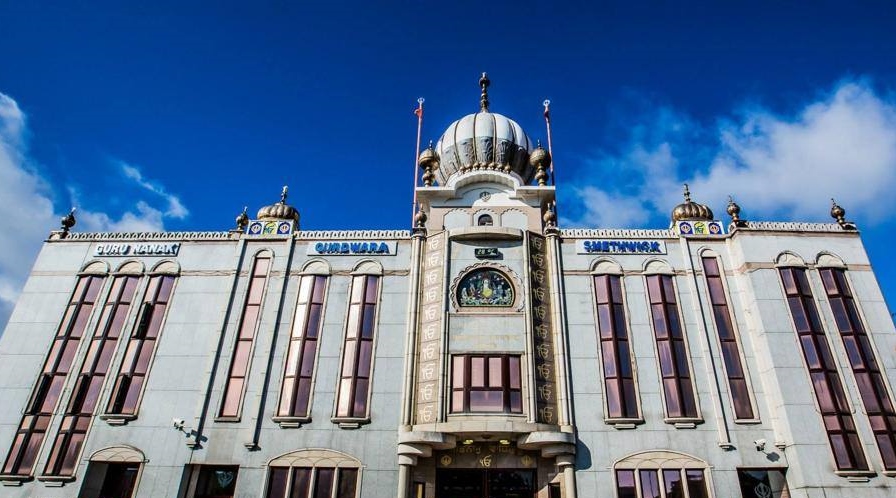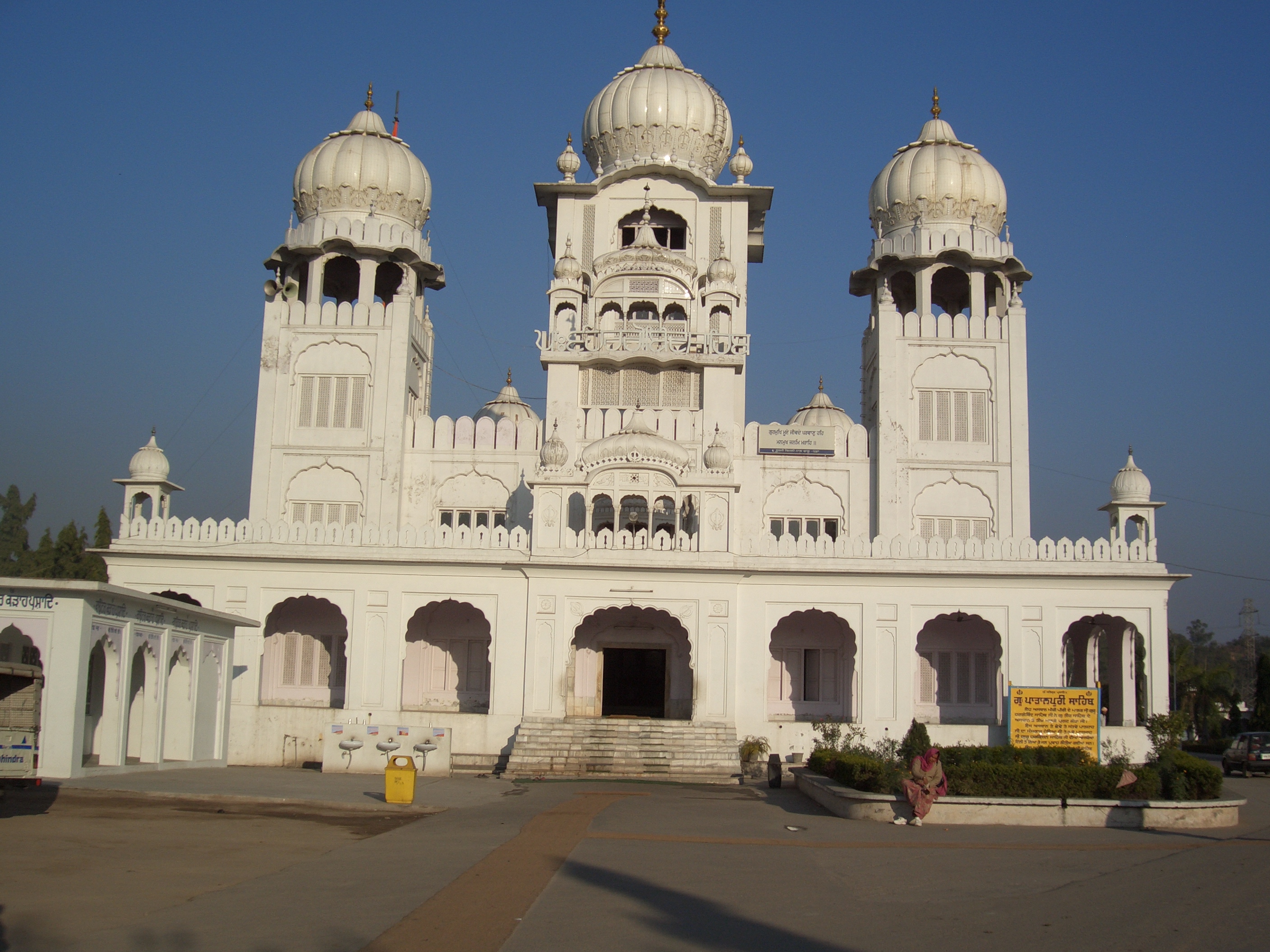|
Kiratpur Sahib
Kiratpur also known as Kiratpur Sahib is a town in Rupnagar district, Punjab, India, Punjab, India. The town is the location of the Gurdwara Patal Puri where many Sikhs take ashes of their deceased. Kiratpur Sahib Town Kiratpur Sahib (31.1820758°n 76.5635490°e) was established in 1627 by the 6th Sikh Guru, Guru Har Gobind, Guru Hargobind, who bought the land from Raja Tara Chand of Kehlur through his son, Baba Gurditta. The place is also associated with the memory of a Muslim saint, Pir Budhan Shah, Pir Buddan Shah. It is situated on the bank of the Sutlej about 10 km south of Anandpur, about 30 km north of Rupnagar and 90 km from Chandigarh on the Nangal-Rupnagar-Chandigarh road (NH21). It is a sacred place for the Sikhs. Guru Nanak Dev is said to have visited this place when it was little more than a wilderness. Guru Hargobind, the sixth Guru spent the last few years of his life here. Both Guru Har Rai and Guru Harkrishan were also born at this place and t ... [...More Info...] [...Related Items...] OR: [Wikipedia] [Google] [Baidu] |
States And Territories Of India
India is a federal union comprising 28 states and 8 union territories, with a total of 36 entities. The states and union territories are further subdivided into districts and smaller administrative divisions. History Pre-independence The Indian subcontinent has been ruled by many different ethnic groups throughout its history, each instituting their own policies of administrative division in the region. The British Raj mostly retained the administrative structure of the preceding Mughal Empire. India was divided into provinces (also called Presidencies), directly governed by the British, and princely states, which were nominally controlled by a local prince or raja loyal to the British Empire, which held '' de facto'' sovereignty ( suzerainty) over the princely states. 1947–1950 Between 1947 and 1950 the territories of the princely states were politically integrated into the Indian union. Most were merged into existing provinces; others were organi ... [...More Info...] [...Related Items...] OR: [Wikipedia] [Google] [Baidu] |
Veer-Zaara
''Veer-Zaara'' () is a 2004 Indian Hindi-language romantic drama film directed by Yash Chopra, who co-produced it with his son Aditya Chopra. It stars Shah Rukh Khan and Preity Zinta as the eponymous star-crossed lovers: Veer Pratap Singh (Khan) is an Indian Air Force officer, and Zaara Hayaat Khan (Zinta) is the daughter of a Pakistani politician. Veer is imprisoned on false charges, and a young Pakistani lawyer, named Saamiya Siddiqui ( Rani Mukerji), fights his case. Amitabh Bachchan, Hema Malini, Divya Dutta, Manoj Bajpayee, Boman Irani, Anupam Kher and Kirron Kher play supporting roles. Chopra wanted to make his return to cinema after 7 years; he was dissatisfied with the scripts he received. Aditya then narrated a few scenes of a story he had written, which interested Chopra and prompted him to direct it. Chopra intended the film to be a tribute to Punjab; it was to be titled ''Yeh Kahaan Aa Gaye Hum,'' based on an eponymous song from Yash Chopra's ''Silsila'' (1 ... [...More Info...] [...Related Items...] OR: [Wikipedia] [Google] [Baidu] |
Gurudawara Charankamal Sahib
A gurdwara (sometimes written as gurudwara) (Gurmukhi: ਗੁਰਦੁਆਰਾ ''guradu'ārā'', meaning "Door to the Guru") is a place of assembly and worship for Sikhs. Sikhs also refer to gurdwaras as ''Gurdwara Sahib''. People from all faiths are welcomed in gurdwaras. Each gurdwara has a '' Darbar Sahib'' where the current and everlasting guru of the Sikhs, the scripture Guru Granth Sahib, is placed on a (an elevated throne) in a prominent central position. Any congregant (sometimes with specialized training, in which case they can be known by the term granthi) may recite, sing, and explain the verses from the Guru Granth Sahib, in the presence of the rest of the congregation. All gurdwaras have a hall, where people can eat free vegetarian food served by volunteers at the gurdwara. They may also have a medical facility room, library, nursery, classroom, meeting rooms, playground, sports ground, a gift shop, and finally a repair shop. A gurdwara can be identified from a dist ... [...More Info...] [...Related Items...] OR: [Wikipedia] [Google] [Baidu] |
Gurudawara Manji Sahib
A gurdwara (sometimes written as gurudwara) (Gurmukhi: ਗੁਰਦੁਆਰਾ ''guradu'ārā'', meaning "Door to the Guru") is a place of assembly and worship for Sikhs. Sikhs also refer to gurdwaras as ''Gurdwara Sahib''. People from all faiths are welcomed in gurdwaras. Each gurdwara has a '' Darbar Sahib'' where the current and everlasting guru of the Sikhs, the scripture Guru Granth Sahib, is placed on a (an elevated throne) in a prominent central position. Any congregant (sometimes with specialized training, in which case they can be known by the term granthi) may recite, sing, and explain the verses from the Guru Granth Sahib, in the presence of the rest of the congregation. All gurdwaras have a hall, where people can eat free vegetarian food served by volunteers at the gurdwara. They may also have a medical facility room, library, nursery, classroom, meeting rooms, playground, sports ground, a gift shop, and finally a repair shop. A gurdwara can be identified from a dist ... [...More Info...] [...Related Items...] OR: [Wikipedia] [Google] [Baidu] |
Gurudawara Shish Mahal Sahib, Kiratpur Sahib
A gurdwara (sometimes written as gurudwara) (Gurmukhi: ਗੁਰਦੁਆਰਾ ''guradu'ārā'', meaning "Door to the Guru") is a place of assembly and worship for Sikhs. Sikhs also refer to gurdwaras as ''Gurdwara Sahib''. People from all faiths are welcomed in gurdwaras. Each gurdwara has a '' Darbar Sahib'' where the current and everlasting guru of the Sikhs, the scripture Guru Granth Sahib, is placed on a (an elevated throne) in a prominent central position. Any congregant (sometimes with specialized training, in which case they can be known by the term granthi) may recite, sing, and explain the verses from the Guru Granth Sahib, in the presence of the rest of the congregation. All gurdwaras have a hall, where people can eat free vegetarian food served by volunteers at the gurdwara. They may also have a medical facility room, library, nursery, classroom, meeting rooms, playground, sports ground, a gift shop, and finally a repair shop. A gurdwara can be identified from a dist ... [...More Info...] [...Related Items...] OR: [Wikipedia] [Google] [Baidu] |
Gurudwara Babangarh Sahib, Kiratpur Sahib
A gurdwara (sometimes written as gurudwara) (Gurmukhi: ਗੁਰਦੁਆਰਾ ''guradu'ārā'', meaning "Door to the Sikh gurus, Guru") is a place of assembly and place of worship, worship for Sikhs. Sikhs also refer to gurdwaras as ''Gurdwara Sahib''. People from all faiths are welcomed in gurdwaras. Each gurdwara has a ''Darbar Sahib Hall, Darbar Sahib'' where the current and everlasting guru of the Sikhs, the scripture Guru Granth Sahib, is placed on a (an elevated throne) in a prominent central position. Any congregant (sometimes with specialized training, in which case they can be known by the term granthi) may recite, sing, and explain the verses from the Guru Granth Sahib, in the presence of the rest of the congregation. All gurdwaras have a hall, where people can eat free vegetarian food served by volunteers at the gurdwara. They may also have a medical facility room, library, nursery, classroom, meeting rooms, playground, sports ground, a gift shop, and finally a repair ... [...More Info...] [...Related Items...] OR: [Wikipedia] [Google] [Baidu] |
Gurudwara Baba Gurditta Ji, Kiratpur Sahib
Gurudwara Baba Gurditta Ji is a Sikh temple (''gurdwara'') in the village of Chandpur Rurki of Nawanshahr District in Indian Punjab. The gurudwara is situated at the entrance of the village and about 1.5 km from Garhshankar-Anandpur Sahib link highway. It was built in memory of Baba Gurditta and Baba Kesra Singh Ji. Famous visitors Gurudwara Baba Gurditta Ji is a historical and holy place for Sikhism. Baba Gurditta Ji visited Chandpur Rurki with two associates. They stayed one night along with their horse. This Gurudwara has two Samadhis for two associates, held in main Gurudwara Sahib Ji. Herein Baba Ji traveled on horseback along with two associates, and took rest here. The chain with which they tied their horse is still visible in Gurudwara Sahib. Events and celebrations All events, functions and ceremonies that take place at the Gurudwara have always been started with remembrances to Baba Gurditta Ji. A phrase frequently used there is "Dhan-Dhan Baba Gurditta ji, De ... [...More Info...] [...Related Items...] OR: [Wikipedia] [Google] [Baidu] |
Kiratpur Sahib
Kiratpur also known as Kiratpur Sahib is a town in Rupnagar district, Punjab, India, Punjab, India. The town is the location of the Gurdwara Patal Puri where many Sikhs take ashes of their deceased. Kiratpur Sahib Town Kiratpur Sahib (31.1820758°n 76.5635490°e) was established in 1627 by the 6th Sikh Guru, Guru Har Gobind, Guru Hargobind, who bought the land from Raja Tara Chand of Kehlur through his son, Baba Gurditta. The place is also associated with the memory of a Muslim saint, Pir Budhan Shah, Pir Buddan Shah. It is situated on the bank of the Sutlej about 10 km south of Anandpur, about 30 km north of Rupnagar and 90 km from Chandigarh on the Nangal-Rupnagar-Chandigarh road (NH21). It is a sacred place for the Sikhs. Guru Nanak Dev is said to have visited this place when it was little more than a wilderness. Guru Hargobind, the sixth Guru spent the last few years of his life here. Both Guru Har Rai and Guru Harkrishan were also born at this place and t ... [...More Info...] [...Related Items...] OR: [Wikipedia] [Google] [Baidu] |







